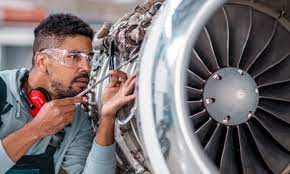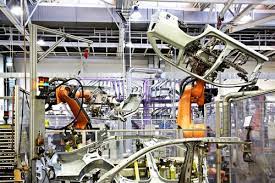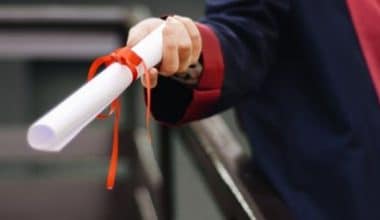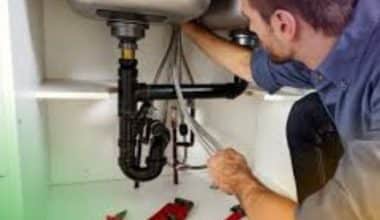Are you curious about the world of aerospace engineering? Are you wondering what aerospace engineers actually do, how much they earn, and how you can join their ranks? Don’t worry we’ve got you covered.
In this article, we’ll take a deep dive into the fascinating realm of aerospace engineering. We’ll explore the exciting tasks they tackle, shed light on the potential paycheck, and provide you with practical steps to kickstart your journey towards becoming an aerospace engineer.
But let’s start with the basics…
Who are Aerospace Engineers
Aerospace engineers are in charge of the design, development, testing, and production of aircraft, spacecraft, and associated systems and equipment. The two main and overlapping sections of the field—aeronautical engineering and astronautical engineering—have historically concentrated on issues relating to air and space flight.
The theory, technique, and application of flight within the Earth’s atmosphere are the main topics of aeronautical engineering. The science and technology of spacecraft and launch vehicles are the main areas of interest in astronautical engineering.
What is the Work of an Aerospace Engineers
Leading-edge technologies are created by aerospace engineers and integrated into aircraft vehicle systems for uses in transportation, communications, exploration, and defense. This includes the development and production of missiles, propulsion systems, satellites, and aircraft, as well as the design and testing of aerospace and aviation-related goods, parts, and subassemblies. Propulsion, materials and constructions, vehicle dynamics and control, software, and aerodynamics are all areas in which successful aerospace engineers excel.
What Companies Employ Aeronautical Engineers
Aerospace engineers primarily work in the aerospace industry, at corporations, government agencies, universities, and software and system vendors. Because of their extensive and diversified skill sets and prior work as systems architects and engineers, aerospace engineers may contribute to a wide range of industries.
The Bureau of Labor Statistics reports that the following industries employed the most aerospace engineers in 2014:
- Manufacturing of aerospace products and parts: 38%
- Engineering services: 14%.
- Government of the United States, excluding the postal service: 13%
- Physical, engineering, and biological sciences research and development: 12%
- Manufacturing of navigational, measuring, electromedical, and control instruments: 5%
Furthermore, according to the Aviation Week 2016 Workforce Study, Penn State topped the list of preferred providers of engineering talent to the aerospace and military industry in 2016 for the fourth time in six years.
How do You Train to be an Aerospace Engineer
Aerospace engineers, like nearly all engineers, must possess a bachelor’s degree in aerospace engineering or a closely related subject. But a high school student who wants to major in aeronautical engineering should take classes in chemistry, physics, advanced math, computer programming, and languages. Students who are interested in careers in aeronautical engineering must enroll in science and math courses. For any form of engineering, for instance, advanced math, physics, and computers are all vitally significant courses.
A student must earn a bachelor’s degree in aeronautical engineering in order to practice as an aerospace engineer. You can, however, alternatively earn a degree in a similar discipline to aerospace. A security clearance is required for engineers who need to work on national defense initiatives.
The best colleges and universities for studying aerospace engineering are listed here.
- Imperial College London, United Kingdom
- The British University of Oxford
- The Netherlands’ Delft University of Technology
- Switzerland: EPFL
- ETH, Zurich, Switzerland
- University of Cambridge, UK
- Politecnico di Milano, Italy
- RWTH Aachen University, Germany
Numerous colleges also offer online programs in aircraft engineering.
After completing your degree, you should hunt for entry-level jobs and apprenticeships to bolster your credentials.
Tip: It's challenging to find an engineering job immediately out of college. It is difficult for new engineers to get quick employment because the aerospace business is becoming more saturated every year. Getting a relevant job can help you network with influential people in the field and get experience. As an illustration, you may start off as an aerospace technician. You can easily meet the requirements for a top aerospace engineering career once you've accumulated significant experience.
Links and Resources for Aeronautical Engineering
- The largest technical society committed to the worldwide aerospace industry is the American Institute of Aeronautics and Astronautics.
- The oldest technical society in the world devoted to advancing the study of vertical flight technology is the American Helicopter Society International.
- The International Astronautical Federation promotes the development of space assets by fostering international cooperation and providing breakthroughs in knowledge about space.
- The leading trade organization for the country’s largest aerospace and defense manufacturers is the Aerospace Industries Association.
- The American Astronautical Society is the country’s top independent scientific and technical organization, devoted only to furthering space science and exploration.
- Information for flight test engineering experts in the test operations, analytical, instrumentation, and data systems sectors is available from the Society of Flight Test Engineers.
- The organization, systems engineering, design, development, integration, and operation of complex systems for space, air, ocean, or ground environments are the main areas of interest for the IEEE Aerospace & Electronic Systems Society.
Which Branches of Aerospace Engineering are there
Traditionally, space and airborne missions have been the focus of aerospace engineering. However, aerospace engineering can be divided into two basic subfields.
#1. Aerospace Engineering
This field focuses on developing and launching spacecraft. It is based on how well spacecraft perform both inside and outside of the Earth’s atmosphere. This section includes classic big satellites as well as smaller ones like CubeSats.
#2. Engineering in Aeronautics
In essence, aeronautical engineers are involved in every part of the aircraft. This broad field of research covers everything from designing to optimizing aerodynamic shape to how construction materials are used. It also covers flight technology that supports aircraft systems in the Earth’s atmosphere.
Aeronautical and aeronautic engineers can choose from a wide variety of jobs. Examples include homeland defense, aircraft engineering, and aerospace design for companies that conduct launches. Drones and other robotic flyers are also designed and constructed by aerospace engineers for a variety of reasons. They also carry out research and develop related systems, such as instrumentation and navigation. Finally, aerospace engineers can also work for public sector organizations including intelligence services, regulatory bodies, military services, private businesses, and even for-profit space exploration firms.
Aerospace Engineers Salary
The Bureau of Labor Statistics reports that in May 2014, the median annual salary for aerospace engineers was $105,380. In the top industries where they worked, aerospace engineers’ median annual salaries were as follows:
- Government of the United States, excluding postal services, = $113,550
- Manufacturing of control, electromedical, measuring, and navigational devices = $111,660
- Physical, engineering, and life sciences research and development costs come to $107,490.
- Engineered services are worth $103,450.
- Manufacturing of aerospace products and components = $102,430
- Penn State Aerospace Engineering undergraduates earned an average beginning salary of $63,286 in the academic year 2015–2016.* *
- Engineering undergrads who completed their senior exit surveys on a voluntary basis gave the data regarding the average annual starting wage.
What Professions are Available for Aerospace Engineers
#1. Designers
The need for commercial and private air travel is growing, which encourages the development of innovative and safe aircraft machinery. These engineers provide innovative designs for all kinds of aircraft.
#2. Engineer, Military Aerospace
Developing novel technologies is essential to reducing collateral damage. To aid military forces, these experts, for instance, build laser-guided weaponry.
#3. Mission/Payload Specialist
These experts work as crew members on space flights to collect data and conduct various experiments. They also carry out other duties connected to the various missions.
Payload experts, on the other hand, take care of equipment parts to guarantee proper installation and usage. These positions often have a set duration. Therefore, researchers have a higher chance of landing these jobs.
#4. Data Processing Manager
To conduct research and plan data, this branch of engineering is increasingly turning to supercomputer simulations. Data processing managers are always in demand. These experts gather and prepare data in order to implement creative ideas. Additionally, these professionals are solely in charge of all computer operations and system troubleshooting.
#5. Mechanical Engineer
Aerospace engineers are quick to develop new ideas and come up with ways to improve the performance of airplanes and spacecraft. In light of this, a mechanical engineer might contribute to the aerospace sector by investigating and developing improved technology.
#6. Compliance Officers
These personnel, known as compliance officers, ensure the entire safety of both ground and air passengers. According to each mission, these inspectors or compliance officers develop safety requirements. Such experts are hired by government organizations and aviation manufacturers.
Every aerospace team has technicians on staff who have undergone professional training.
#7. Aerospace Technician
These specialists have received practical training in the installation, testing, and upkeep of any device. These technicians are employed by manufacturers of aerospace and aviation products.
#8. Drafter
Prior to developing spacecraft and airplanes, some rules and drawings are always necessary before working on great missions. These documents were created by drafters to cover every part of various devices.
Do Aerospace Engineers Make Money?
Aerospace engineers have rewarding careers and great yearly earnings. According to data from the Bureau of Labor Statistics for 2021, the median annual salary for aerospace engineers is $122,270. The typical starting pay for an aeronautical engineer is roughly $69,041.
Can I do an Aerospace Engineer for NASA?
NASA employs 20 distinct types of engineers to work on our numerous missions; the aerospace, general, and computer engineering sectors are the most frequently used. We place a strong focus on engineers who can approach complicated problems holistically and from a systems perspective.
Is Becoming an Aerospace Engineer Hard?
Although degrees in aerospace engineering are challenging, they also present some of the best possibilities after graduation.
What is the Highest Paid Engineer?
- Systems engineers
- Electrical engineers
- Chemical engineers
- Mechanical engineers
- Big data engineers
- Nuclear engineers
- Aerospace engineers
- Computer hardware engineers
- Petroleum engineers.
What is the Hardest Aerospace Engineer?
Students frequently struggle the hardest with theoretical aerodynamics and structural dynamics courses among aeronautical engineering-specific courses.
Is Aerospace Engineer a Stressful Job?
Engineering in the aerospace industry can be stressful. It requires a thorough examination of technical documentation and safety regulations. Engineers may write their own reports, but doing so accurately might take time and careful attention.
Do Aerospace Engineers make 6 Figures?
According to the U.S. Bureau of Labor Statistics, the national median annual compensation for aerospace engineers is $122,270. With the lowest 10% of employees making less than $77,440 annually and the highest 10% making more than $168,370 annually, the salary range can vary dramatically.
Conclusion
These individuals create satellites and spacecraft. They assess prototypes as well to ensure top-notch performance. Additionally, these experts manufacture components such as gears, wings, and motors. Additionally, they create the specifications for both destructive and non-destructive tests. Engineers can examine an aviation machine’s performance and durability using this kind of testing.
Related Articles
- WHO IS AN AEROSPACE ENGINEER: Job Description, Duties & Salary
- AEROSPACE ENGINEER: Job Description, Duties, and Salary
- COMPUTER HARDWARE ENGINEER: Duties & How to Become One
- Sales Engineer: Job Description, Skills & Salary Updated! (US)
- ROBOTIC ENGINEER: Job Description, Duties & Salary






